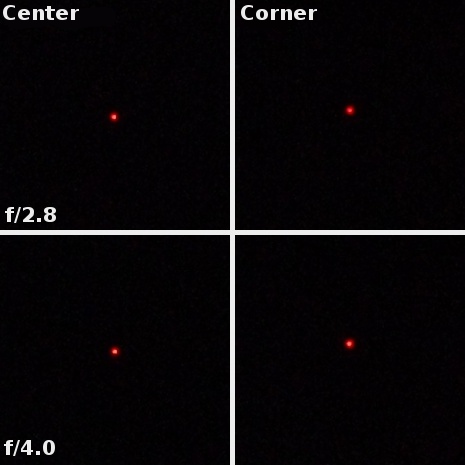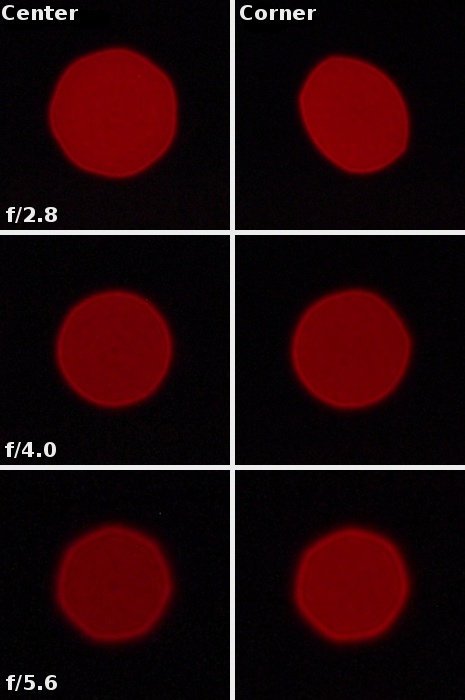Olympus M.Zuiko Digital 60 mm f/2.8 ED Macro
7. Coma, astigmatism and bokeh

The problem with the noticeable level of astigmatism can be seen only near the maximum relative aperture. The official level of that aberration, being an arithmetic mean of three minimum aperture values, amounts to 7.9% and it is not a bad result. On stopping down the change of its level is very abrupt, though. At the maximum relative aperture it reaches as high as 17% but by f/4.0 it decreases to a negligible value of 4%.
Please Support UsIf you enjoy our reviews and articles, and you want us to continue our work please, support our website by donating through PayPal. The funds are going to be used for paying our editorial team, renting servers, and equipping our testing studio; only that way we will be able to continue providing you interesting content for free. |
- - - - - - - - - - - - - - - - - - - - - - - - - - - - - - - - - - - - - - - - - - - - - - - -
Below we present circles of light which were created by defocusing light points. It is clear that the intensity of local extremes increases on stopping down but nowhere it has alarming effects. The fact that already by f/4.0 the ring in the frame corner is almost the same as the ring in the centre is praiseworthy.
It is also very curious that even at the maximum relative aperture the image is not perfectly circular and you can notice an influence of aperture blades.







